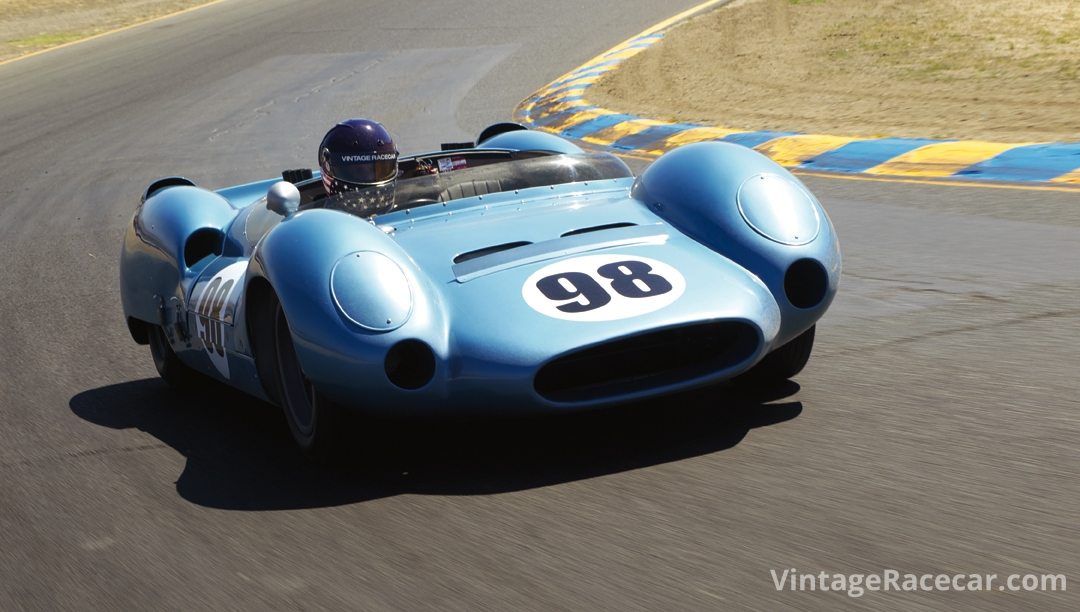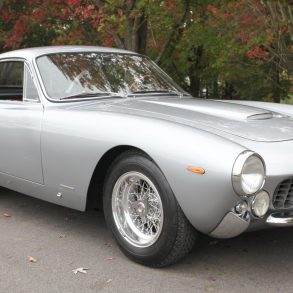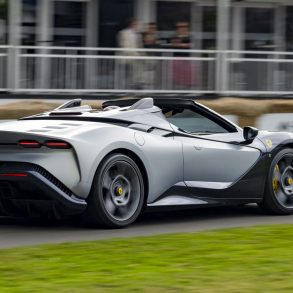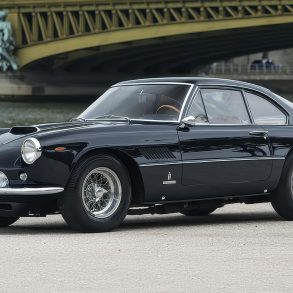In Zen Buddhism it is called a Koan, a question that can only be answered through intuition, not rationale understanding…what is the sound of one hand clapping? In the historic racing world, the Buddhist acolyte might ask, “When does the recreation of history become, itself, history?”
This notion seems to me similar to looking at the reflection of oneself in the reflection of opposing mirrors—essentially an imponderable. However, historic racing has always been about the recreation—the reenactment if you will—of racing history. And yet, after decades in this pursuit, one particular event has become a part of racing history, in its own right. The event I speak of is, of course, the Monterey Historic Automobile Races, which this month celebrates its 35th anniversary.

With this year being the 50th anniversary of Formula Junior, the Historics will host three separate races for Formula Juniors including the early front-engine cars, the early mid-engine cars, and the more sophisticated mid-engine cars from the series final two seasons. In this month’s Racecar Profile, our crack UK editorial team, lead by Ed McDonough, were tasked with putting together a “Formula Junior Super-Test” that would pit an exemplary example from each of these eras, in a head-to-head test. The result was a Profile pitting the front-engine OSCA driven by Pedro Rodriguez, against the 1960 championship-winning Lotus 18, driven by Trevor Taylor, with the lightning-fast Brabham BT6, driven by David Prophet. Three stunning Juniors—turn to page 36, to see which one our team fancied the best. Continuing the Junior thread, Mike Jiggle tracked down the 1960 and 1961 Formula Junior–champion Trevor Taylor, and in this month’s interview, found out what racing in the “junior” years was really like.
The very first year that the Historics honored a featured marque (1975), the marque of choice was Alfa Romeo. As such, Robert Newman brings us a look at the halcyon days of the Alfetta 158/159 in “Heroes,” while this year’s Grand Marshall for the Historics, Mario Andretti, relays his memories on racing Alfa’s endurance sports cars, in “Legends Speak.”
While the emphasis and the focus of the Historics have always been on the cars, it’s often difficult to separate the drivers from their machines. The perfect example of this is Historics participant David Love and his gorgeous Ferrari 250 Testa Rossa. Steve Earle credits Love with giving him the idea of starting a historic racing event—that went on to become the Historics—and as a result, Love has competed in all 35 of them! In this month’s main feature, Gary Horstkorta takes a look at the fascinating history of Love and his Ferrari, which includes SCCA championships, the founding of the second oldest historic racing club in the United States (CSRG) and, of course, 35 Monterey Historics.
Across these past 35 years of the Historics, only one driver has ever been honored to be the “featured marque” at Monterey, and that special driver was Juan Manuel Fangio. In a bonus feature this month, our own Robert Newman looks back at his very personal experiences working with Fangio on the occasion of his 80th birthday. Elsewhere, Pete Lyons examines Fangio, not as one of the greatest racing drivers of all time, but as one of the greatest human beings to have ever raced. As always, his insights reveal a side of Fangio all too lacking in today’s Formula One pilots.
Add to this rich mix, Art Evans’s examination of the very first Monterey Historics on August 19, 1974, a timeline highlighting all 35 years of events, as well as the usual mix of news, photo galleries, and other departments, and you’ve got one of our largest—and I hope—best issues. Like a tree falling in the forest with no one to hear it, 35 years ago Steve Earle and a small band of friends set out to put on an informal track event, with no other goal in mind than to give old racecars a safe place to relive their glory days. What did, ultimately, sprout from this tiny seed? A giant Redwood of an event encompassing two weeks of racing, concours, auctions, and ancillary events that has become a touchstone for the worldwide classic car community. Namasté Monterey.










